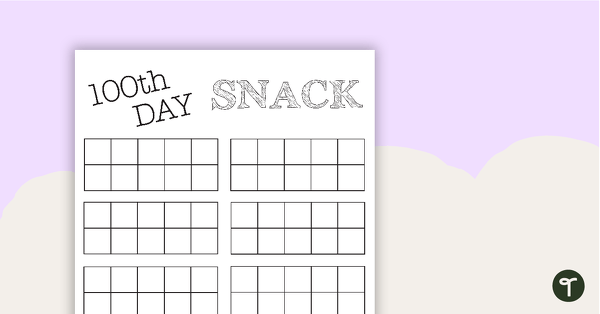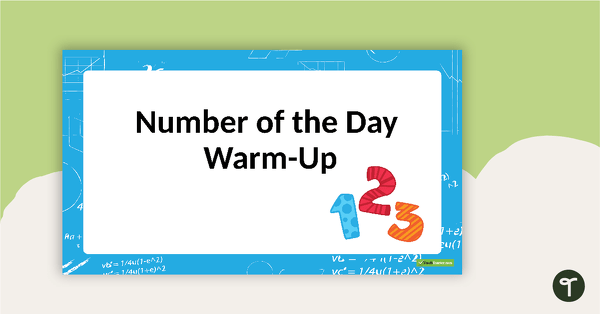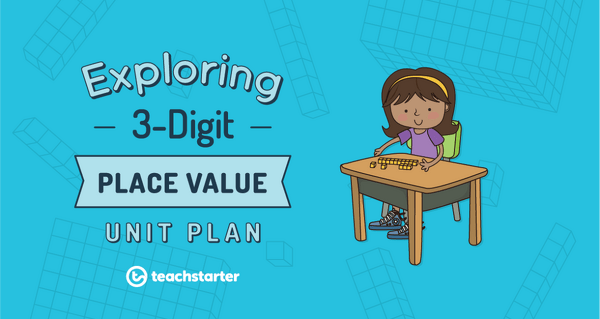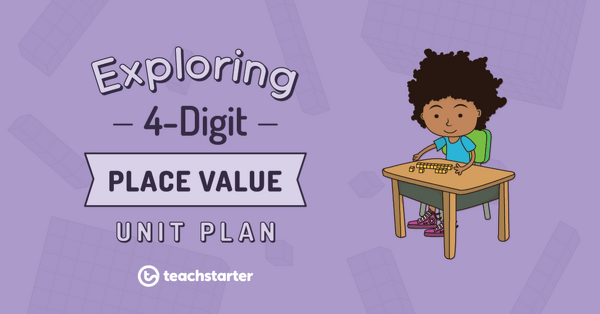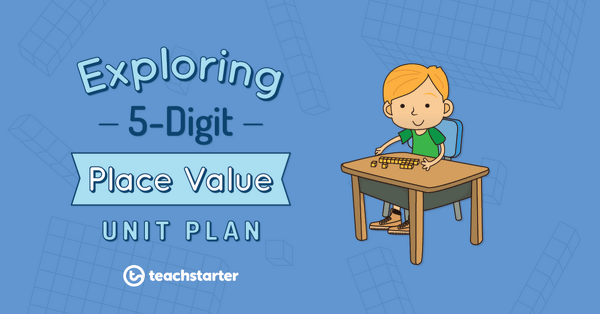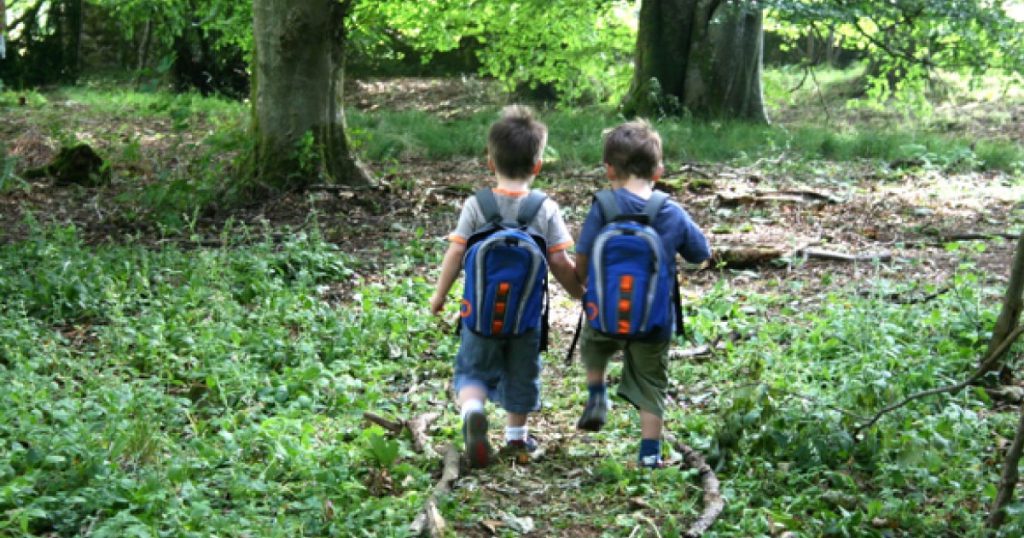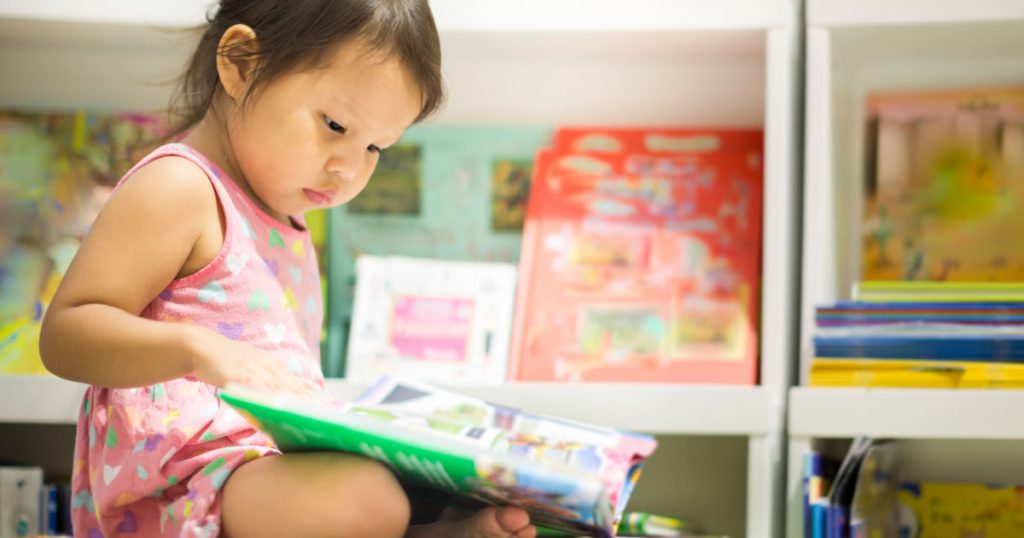Teaching young children about place value is arguably one of the most important aspects of the maths curriculum. The main objective is for your students to understand the real value of a number. That is, the understanding that whilst a digit can be the same, its value may be different depending on where it is in a number. For example, the 2 in 120 represents 2 tens, or the 2 in 52 represents 2 units or 2 ones. Having a collection of strategies for teaching place value in the early years will provide multiple stepping stones along the pathway of crucial place value knowledge.

Shutterstock.com / Natalia Mels
Activities and Strategies for Teaching Place Value
Manipulatives
In every facet of place value teaching and learning, manipulatives are a must! Hands-on materials such as Base-10 blocks, Unifix cubes, paper clips and Paddle Pop sticks are standard materials you’ll find in the classroom. Getting students to use a variety of materials to represent a number on a Place Value Mat and then having them take 1 away, 10 away or even 100 away is a great hands-on activity. Just having these materials at your students’ fingertips through every step of the journey is also crucial! So, make sure these materials are always accessible for your students to use.
Incorporating printable activities is also a great way to keep your students engaged with the learning of place value. In this activity, students need to create a Place Value Castle. Students could use real MABs to create the castle as well as the paper version.
Place Value Houses
Use Place Value Houses when creating and exploring 2-digit and 3-digit numbers. When you utilise place value houses, you are moving students from a concrete model to a pictorial representation. In each house, students record how many ones, tens, hundreds, etc. are in each place.
The ‘rooms’ inside each house are a visual reminder to students that there is only enough room for nine units, tens or hundreds in each column. Once the ‘house’ is full, it is necessary to move over into the next ‘house’.
For example: If there are nine units in the units house, and you want to add another unit, you must now move all of the units into the tens house to create one ten.
Use Number Lines
Incorporating number lines is a great way to help consolidate place value understandings with your students as well. Why not include a number line activity into your maths rotations?
In this game, students start the game with their cars on 0. Students take turns rolling the dice. When it is their turn, the player moves their car along the number line the corresponding number of spaces. To really investigate place value, have students break up each number into tens and units when they get to a certain number.
We also have this fantastic Two-Digit Number Line Activity Prompt Cards game. Students pick a card and then read the clues to the class – each of the clues linkes heavily with place value. Here’s one of the clues:
Place a counter on the number that has a 3 in the tens column and a 2 in the ones column.
Compose and Decompose
Providing multiple opportunities for your students to compose and decompose numbers is a solid way to really cement their understanding of digits within numbers. We have a range of activities that you can incorporate into your maths learning to get your students composing and decomposing numbers.
In this Place Value Spin activity, students compose the number of ‘tens’ and ‘ones’ into a two-digit number. Once your students have completed the sheet, why not get them to give their sheet to a partner and have their partner then decompose the numbers into ‘tens’ and ‘ones’
We also have our Roll It, Make It, Expand It! Place Value worksheet where students roll two dice and select one dice as their ‘tens’ and one dice as their ‘ones’. Students then record the number they have rolled, make it with MAB, draw what they have made, and show it in expanded form. This worksheet encompasses a number of strategies so it is a fantastic activity to do with your students.
Teach Ten as a Bundle of Ones
Explicitly explain to your students the concept of a ten and how it is also a bundle of ones. This is a really tricky concept for little learners to grasp, however, it is a crucial stepping stone. Lots and lots of hands-on activities work best for this. Simple activities to teach this strategy include bundling together objects into groups of ten and then counting in tens to work out how many there are all together.
Another simple visual you can show to your students is to line up a base-10 rod with 10 ones blocks and show how they are equal. Also, another great activity is using printable Tens Frames to play with maths manipulatives and group single objects into groups of tens.
Place Value Houses are also a great visual to teach this concept.
Number of the Day
A routine which includes completing a number of the day activity is a great way to incorporate place value understandings into your classroom every single day! A number of the day has students focusing on one number and showing their full understanding of that number. Activities can include:
- writing the number in word form
- writing the number in digit form
- recording the place value of each digit
- writing the number in expanded form
- creating a number pattern starting with the given number
- representing the number with beads on an abacus
- writing a number greater than the given number
- writing a number less than the given number.
Number of the Day resources:
If you are looking for a more in-depth way of teaching place value to your young students, you may like to check out our Place Value Unit Plans.
You may like to check out our blog – 6 Place Value Games for the Classroom.
The post Strategies for Teaching Place Value in the Early Years appeared first on Teach Starter.






